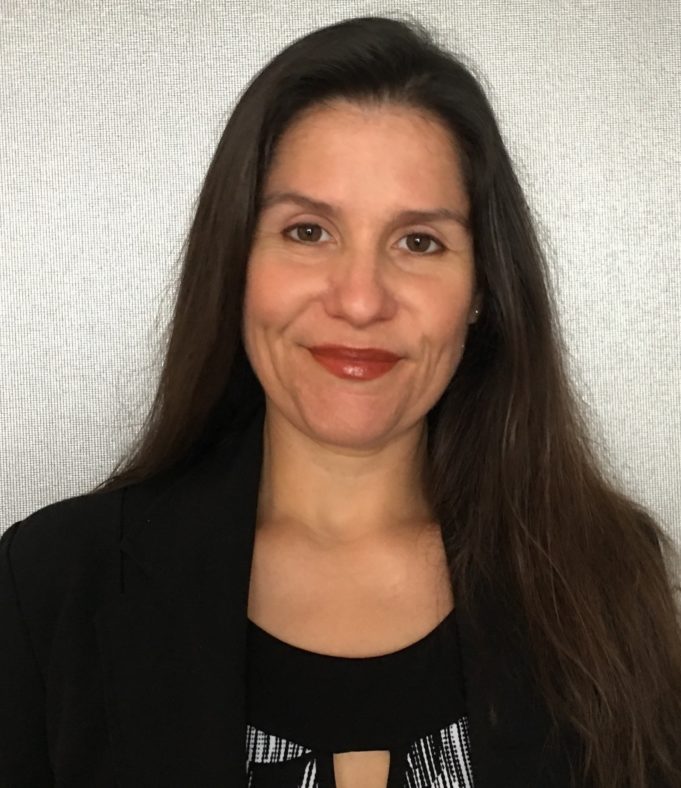Epidemiologists are tasked with understanding how diseases spread and how to slow or stop them. Epidemiologist Diana Cervantes splits her time teaching at UNT Health Science Center and helping area healthcare centers prepare for potential outbreaks. She led the team of epidemiologists who implemented surveillance and prevention measures in Dallas during the 2014 Ebola response.
We reached out to Dr. Cervantes to see what insights her professional training can lend to our understanding of the ongoing pandemic.
Does the COVID-19 outbreak meet the criteria for a pandemic?
Yes. This is a new virus, so nobody has immunity. It can be actively transmitted from person to person, and we are seeing widespread and sustained transmission.
Do we know why children don’t seem to be significantly affected by COVID-19?
We don’t know why children, in general, have minor or no symptoms. It’s not uncommon to see children that have minor symptoms and serve more as carriers for viruses or bacteria. In other diseases like chickenpox, having the disease when you are younger protects you from severe symptoms when you are older.
Can pandemics originate from anywhere?
They can start from anywhere. The reason you saw this one emerge from China was because it was a virus that came from bats, most likely, and then spread to people through another animal. The more we come into contact with our environment, the greater the risk of a pandemic. It’s not something that just happens in Africa and China.
People who study coronaviruses have looked at this virus in bats for a long time. They know that this has happened before where viruses can be sustained in an animal and make that jump. Why is it a bat versus [another animal]? I don’t know. The first [SARS/Severe Acute Respiratory Syndrome] virus came from a bat, then transferred to civet cats, then to people.
Why do people need to take the ongoing pandemic seriously?
There’s no doubt that we have to take this seriously because nobody has defenses or immunity to this. We don’t know what immunity [after recovery] will look like. We can see from what is happening around the world that there are people who are getting severe diseases and having to be hospitalized. It is a terrible experience.
Distribution among people who have chronic diseases is a big issue. There are a lot of people [in the United States] who have diabetes. The number of cases that we have seen, even from a week ago, has skyrocketed. We have to be worried about people who don’t have signs and symptoms as they could spread this virus to someone who is at high risk of death.
Asthma puts you at great risk. Think of all the people who have asthma. If you have diabetes or asthma, it doesn’t matter what your age is. Even if you get better, some people are having issues with lung capacity.
A lot of people are drawing connections between COVID-19 and the Spanish flu.
The Spanish flu was a different situation. That was during wartime. War is a perfect way to spread disease. Yes, this is a new virus for us, and there is potential for many people to get sick and die, but there is so much more awareness and the ability to work from home. We do have advantages [that people back then did not]. I think we have the tools to be able to greatly reduce illness.
Why do vaccines take so long to make?
They take a long time to make because they have to go through clinical phase testing. You have to make sure you have a good vaccine candidate. That doesn’t necessarily take too long. Then you have to go through three phases of trials to make sure that it is safe for people. Even when you go through the trials, those are under ideal situations.
Once it hits the general public, you see other things because it is out in a broader group of people. It takes time to make sure that they are as safe as possible for the general public. People lined up for the polio vaccine. They realized that some people are actually getting polio from the vaccine. Nobody wants that [to happen with a COVID-19] vaccine.
Will COVID-19 return in the fall?
We will have to wait and see. Our national expert, Anthony Fauci, says it will. He feels it will come back in the fall, and it will not be as intense. When you have a virus that so easily transmits, it’s not just going to burn itself out and go away forever. It may be something that we have to live with. It will circulate like the other coronaviruses. How intense will it be in the fall? We will have to wait and see.
Will the spread of this disease reach a point where it peaks?
It happens with all diseases. You will reach a point where there is a peak and [the number of cases] comes down due to intervention or because people have been infected and there is some level of immunity. There is a lot of modeling being done. Models are one piece of the puzzle. [The peak] could be some time in the next four weeks. It will be impacted by what people do. If people decide they don’t want to do this social distancing, we could see another bump. Hopefully, the peak will not be as high if people do these prevention measures.
Is there a benefit to natural immunity?
When you have a disease and people have immunity, it is going to help [slow the spread]. It causes a herd immunity. With some diseases like measles, you need [communal] immunity of 90 percent. Other diseases are not as contagious, and you need 70 to 75 percent [of people with immunity] to keep the general spread at bay.
How should Fort Worth officials handle reducing the shelter-in-place order?
Hopefully, it will be done in some sort of incremental way. Not just a “Let’s go back to the way things were” choice. We could see a spike again. When we see a decrease, it will not be due to immunity. It is due to the prevention measures we have taken as a community. We have to be careful about how we ease up on things.
If we do see cases here and there [during a recovery], public health professionals can intervene. It definitely can come back [if we are not careful about slowly lifting restrictions]. There’s no doubt about it.












